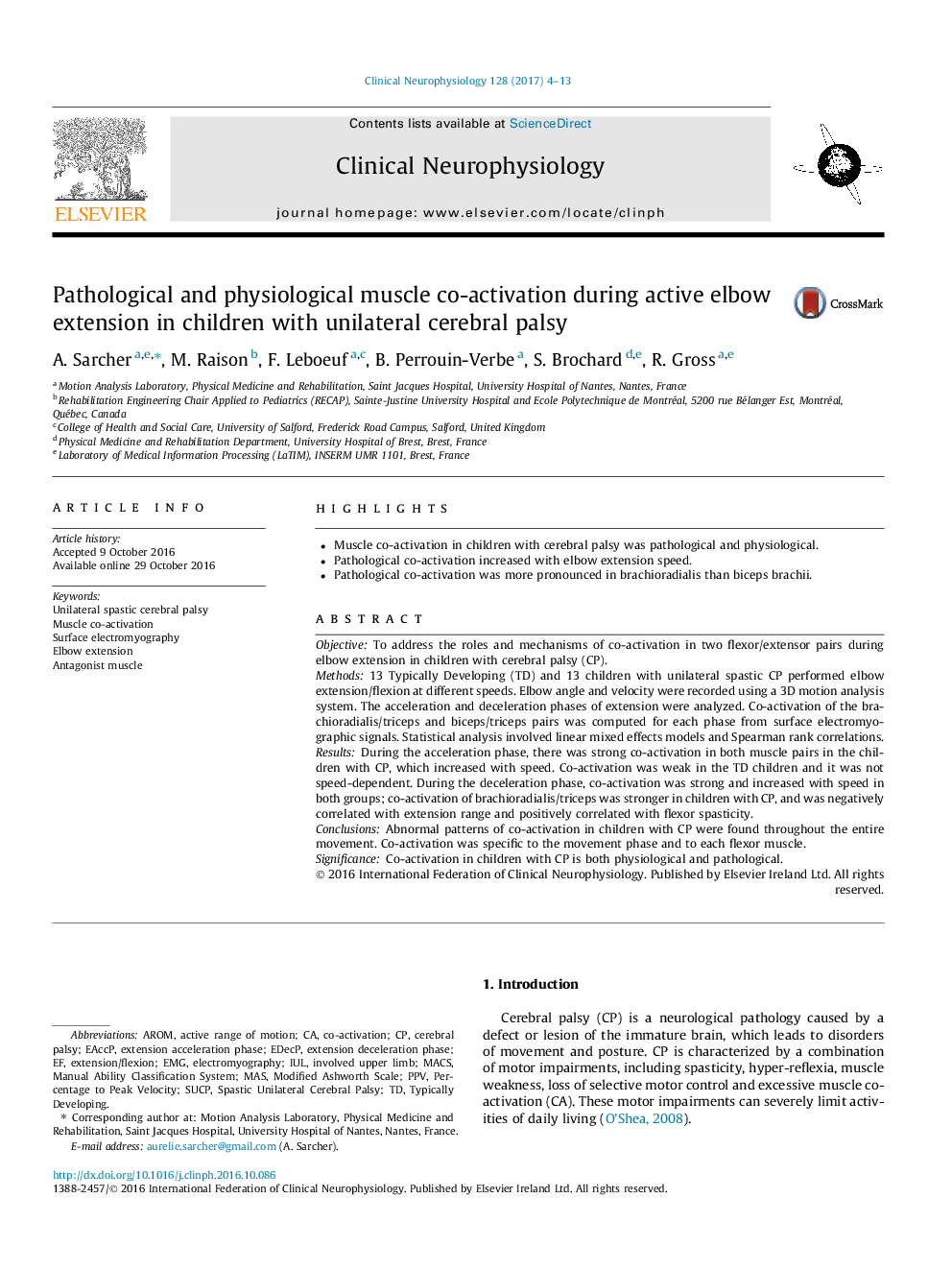| Article ID | Journal | Published Year | Pages | File Type |
|---|---|---|---|---|
| 5627444 | Clinical Neurophysiology | 2017 | 10 Pages |
â¢Muscle co-activation in children with cerebral palsy was pathological and physiological.â¢Pathological co-activation increased with elbow extension speed.â¢Pathological co-activation was more pronounced in brachioradialis than biceps brachii.
ObjectiveTo address the roles and mechanisms of co-activation in two flexor/extensor pairs during elbow extension in children with cerebral palsy (CP).Methods13 Typically Developing (TD) and 13 children with unilateral spastic CP performed elbow extension/flexion at different speeds. Elbow angle and velocity were recorded using a 3D motion analysis system. The acceleration and deceleration phases of extension were analyzed. Co-activation of the brachioradialis/triceps and biceps/triceps pairs was computed for each phase from surface electromyographic signals. Statistical analysis involved linear mixed effects models and Spearman rank correlations.ResultsDuring the acceleration phase, there was strong co-activation in both muscle pairs in the children with CP, which increased with speed. Co-activation was weak in the TD children and it was not speed-dependent. During the deceleration phase, co-activation was strong and increased with speed in both groups; co-activation of brachioradialis/triceps was stronger in children with CP, and was negatively correlated with extension range and positively correlated with flexor spasticity.ConclusionsAbnormal patterns of co-activation in children with CP were found throughout the entire movement. Co-activation was specific to the movement phase and to each flexor muscle.SignificanceCo-activation in children with CP is both physiological and pathological.
